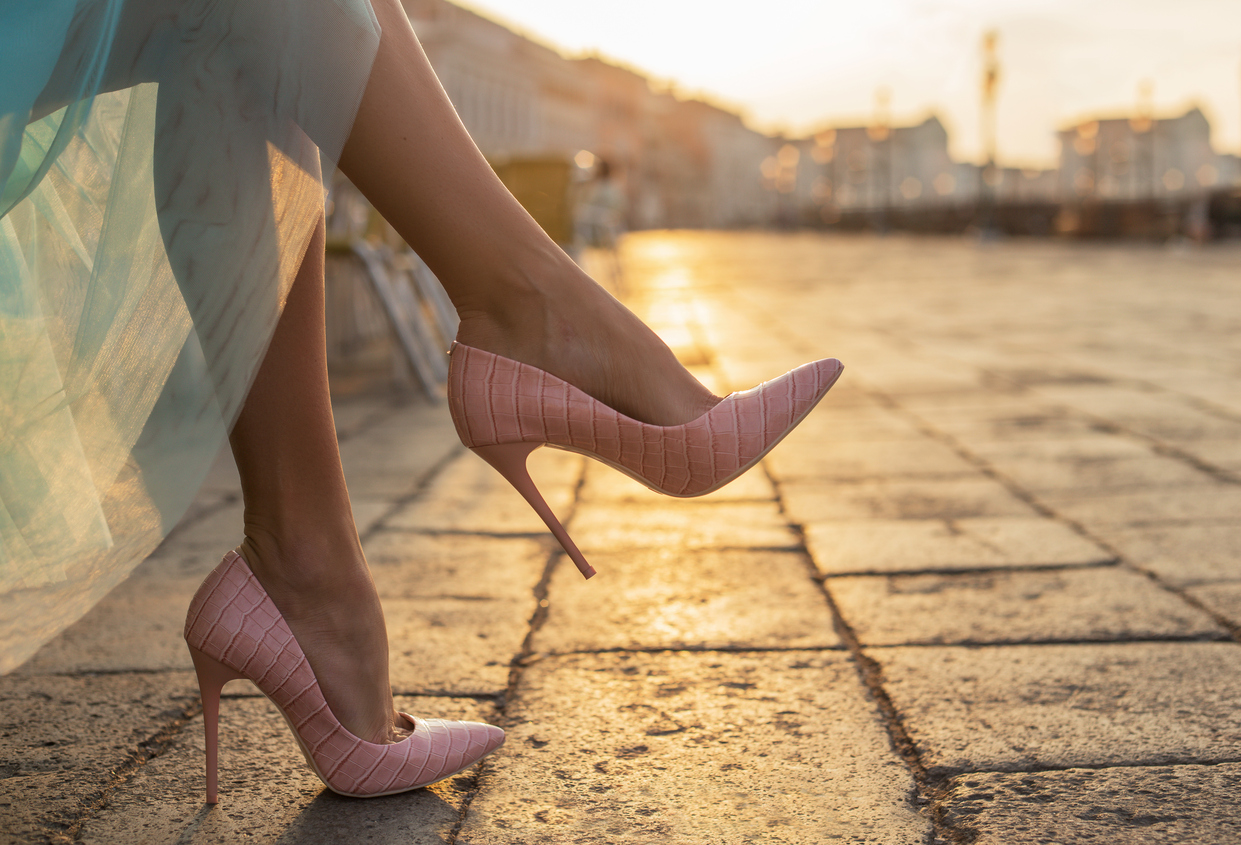-
As a female sports podiatrist based in Sydney's CBD, high heel-related ailments including painful feet and legs are common reasons for consultation. Women regularly express the dilemma of function versus fashion, be it for work or a special event.
Putting my podiatry hat aside, I understand the desire to wear high heels. Therefore as a practitioner – provided the pain experienced is not a chronic injury – I go about making biomechanical adjustments to high heels just as I do for other shoes.
What causes high heel pain?
I believe the dominant duo responsible for high heel pain is ankle instability (often associated with fatigue, causing foot, ankle and leg pain) and the significant peak in forefoot pressure (usually causing burning pain in the ball of the foot).
In a nutshell, the higher and narrower the heel, the greater activation is required by key muscles to stabilise the foot and ankle. When the primary stabilisation muscles fatigue, the secondary muscles overcompensate. When fatigued, muscles lose the ability to produce appropriate stability, putting the wearer at risk of injury, and/or causing the wearer to hail a cab.
“Short of wearing a lower heel or wedge, the secret to improving high heel comfort is increasing the stability of the ankle.”
How to make high heels more comfortable
Short of wearing a lower heel or wedge, the secret to improving high heel comfort is increasing the stability of the ankle, and increasing forefoot cushioning.
Strengthening your ankle stabilisation musculature will reduce muscle fatigue, allowing you to stand and dance in your favourite heels for longer.
Here's an exercise you can try:
- While barefoot, raise up onto the balls of the feet, keeping your weight predominately over the first and second toes (not letting the foot roll outwards).
- Hold this for 30 seconds, standing still or practising walking around in this position.
- Descend back onto your heels and repeat the exercise until your legs start to burn. Stretch your calf muscles well after the exercise and repeat on a daily basis.
Choosing more comfortable heels
There are also some choices you can make about the high heels themselves. A high heel with a platform sole will provide more comfort, due to the greater distance between the forefoot and ground (also reducing the heel pitch) and is usually manufactured from a material other than leather.
A cushioned support insole can also be added to the shoe, while some shoe brands supply a cushioned liner within the sole.
Don’t suffer for fashion. If you experience painful joints, bruising or swelling when wearing high heels, please consult with a health practitioner.
The secret to making high heels more comfortable

-
Mental fitness explained
Just as you work to strengthen your body, your mental health deserves attention and exercise too.
-
Signs it's time to visit the dentist
Nobody wants to go. But there are good reasons to – promise.
-
The link between stress, anxiety and jaw pain
Physiotherapist Michael Chan explains how stress and anxiety can cause jaw pain, and how to help get some relief.
-
When you can't sleep next to your partner
You love everything about them – except their sleep habits.
-
The 7 best sleep apps
7 apps for deep restorative sleep
-
5 ways to relieve stress
Discover 5 easy stress-relief techniques to calm your mind and body. Try exercise, breathing, outdoor time, positive self-talk, and more for a balanced life.
Subscribe to receive the best from Live Better every week. Healthy recipes, exercise tips and activities, offers and promotions – everything to help you eat, move and feel better.
By clicking sign up I understand and agree to Medibank's privacy policy



.jpg)


